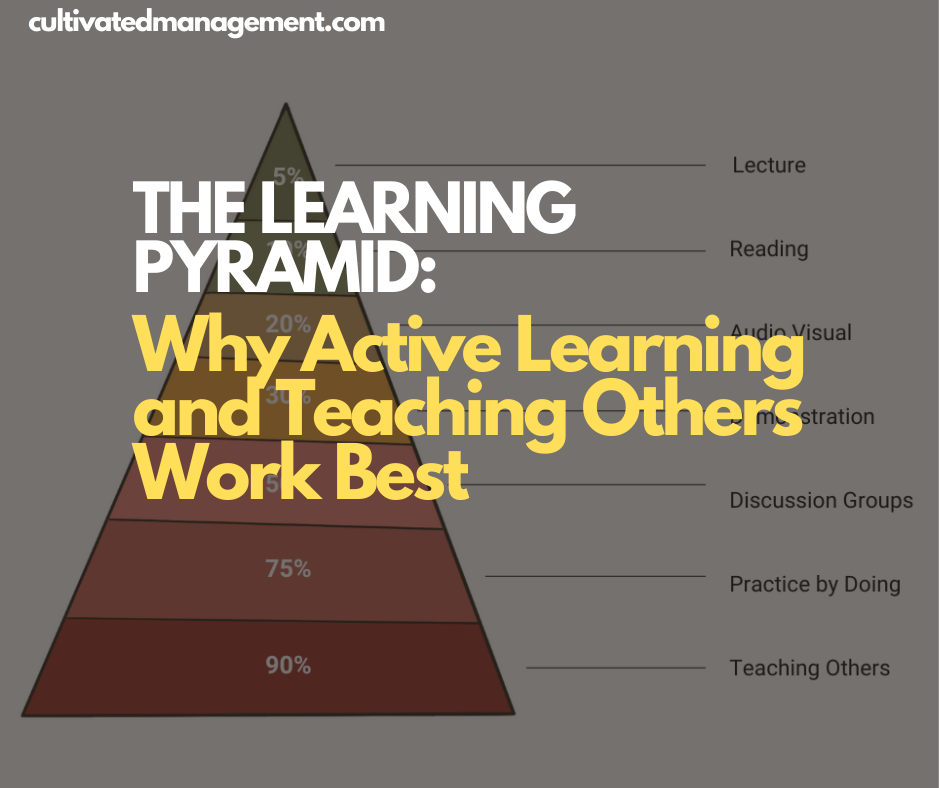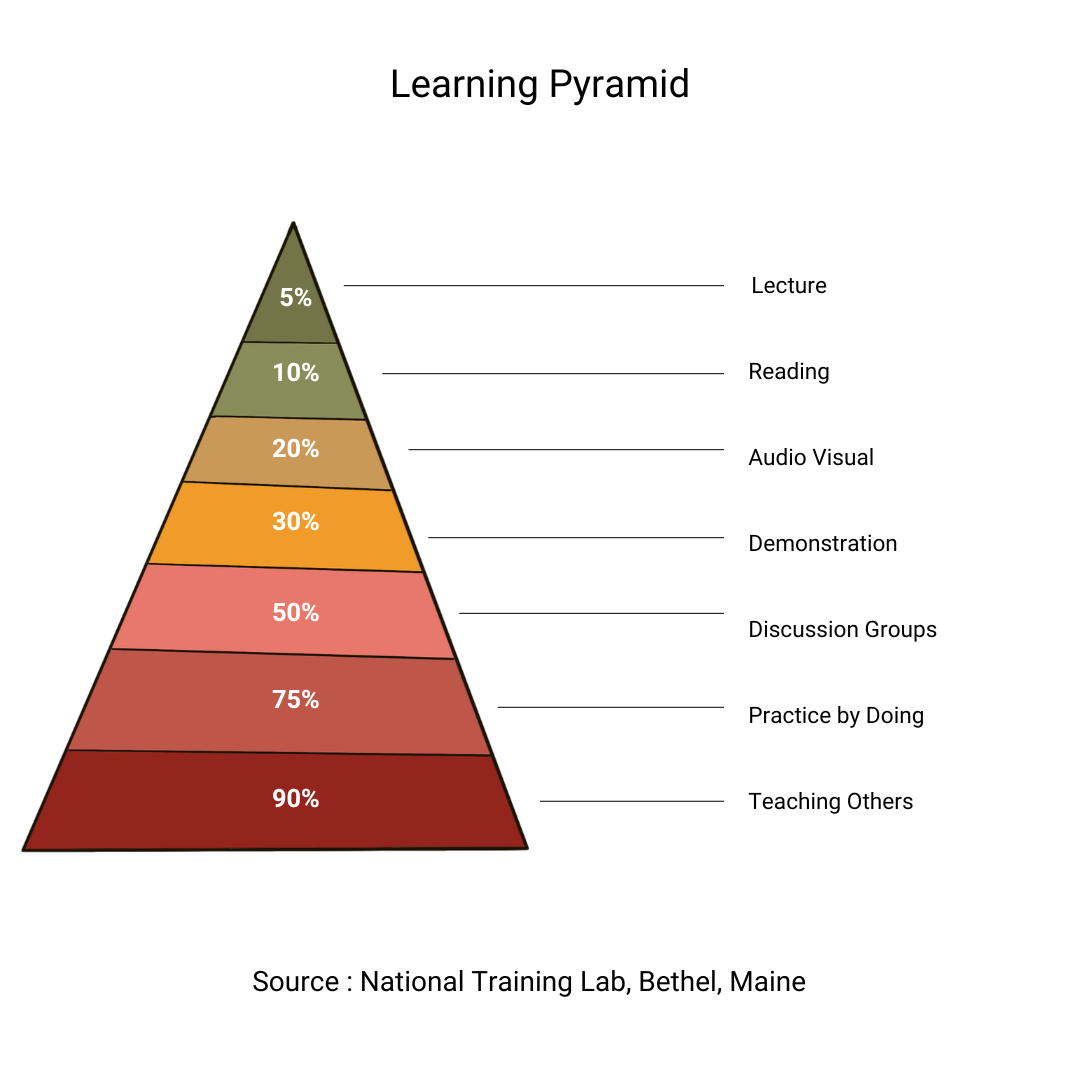
The Learning Pyramid: Why Some Learning Sticks and Some Doesn’t
I recently came across the Learning Pyramid model, and it instantly resonated with my own experience, insights, and knowledge about how people actually learn.
The pyramid illustrates the relative effectiveness of different learning methods, ranked by the percentage of knowledge we’re likely to retain.
And yes, the lines on my recreation of the pyramid are a little wonky — but the message is clear: not all learning approaches are equal.

This article first appeared in the Meeting Notes newsletter - Get One Idea a Week to Lead with clarity and cultivate workplaces that enrich the lives of all who work in them.
What the Learning Pyramid Shows
The pyramid outlines several common learning methods and the average retention rates linked with each:
- Lecture (5%) – Traditional, one-way teaching where information is delivered to an audience.
- Reading (10%) – Slightly better, but still passive.
- Audio-visual (20%) – The use of videos, slides, or media to support learning.
- Demonstration (30%) – Showing how something is done in practice.
- Discussion (50%) – Actively engaging in dialogue, challenging, and reinforcing ideas.
- Practice by Doing (75%) – Applying knowledge directly, hands-on.
- Teaching Others (90%) – The most powerful of all; explaining something to someone else forces you to master it deeply.
Sure, the percentages aren’t perfectly scientific — critics often point that out but the principle is sound. Passive learning doesn’t stick as well as active, participatory, or applied learning.
Blending Approaches for Real Learning
What I particularly like about the model is how these approaches naturally overlap and blend. A workshop, for example, might include a short presentation (lecture), some reading, a live demonstration, small-group discussions, and hands-on practice — all reinforcing each other.
👉 Workshop Mastery is your essential guide to designing and running engaging workshops that inspire lasting impact. Packed with proven facilitation techniques, practical strategies, and real-world insights.
This idea of blending teaching approaches sits at the heart of my book Workshop Mastery. In it, I show how to design workshops that include a variety of different teaching methods - as well as how to develop your communication skills and teaching ability.
Why Teaching Is the Ultimate Learning Tool
Perhaps the most powerful takeaway from the Learning Pyramid is this: if you really want to learn something, teach it.
Explaining a concept to others forces you to simplify, clarify, and confront gaps in your own understanding.
This insight shaped much of Workshop Mastery. Without ever having seen this pyramid, I arrived at the same conclusion: teaching others — whether through workshops, mentoring, or even informal conversations — is one of the fastest and deepest ways to gain and build knowledge.
Final Thoughts
The Learning Pyramid is a simple model, but it captures something we all know deep down: active learning trumps passive learning. If you want to accelerate your growth – move beyond listening and reading, and start practising, discussing, and teaching.
That’s exactly what Workshop Mastery is about—helping leaders, trainers, and facilitators create learning environments where ideas are understood, retained, and acted upon.
Because the real goal of learning isn’t just to know something — it’s to use it, contribute it, and grow from it.
👉 Workshop Mastery is your essential guide to designing and running engaging workshops that inspire lasting impact. Packed with proven facilitation techniques, practical strategies, and real-world insights.
